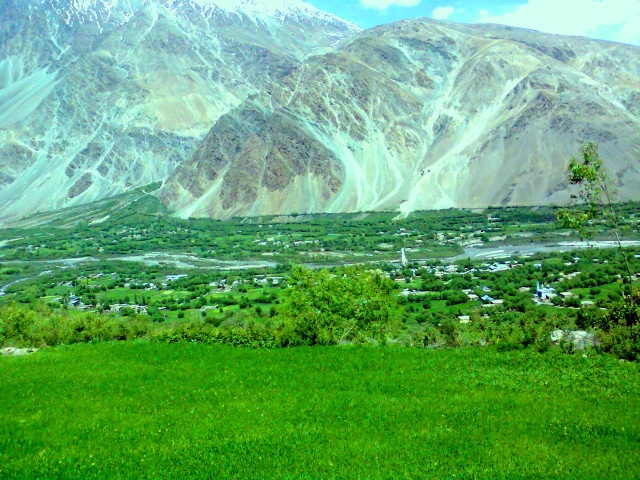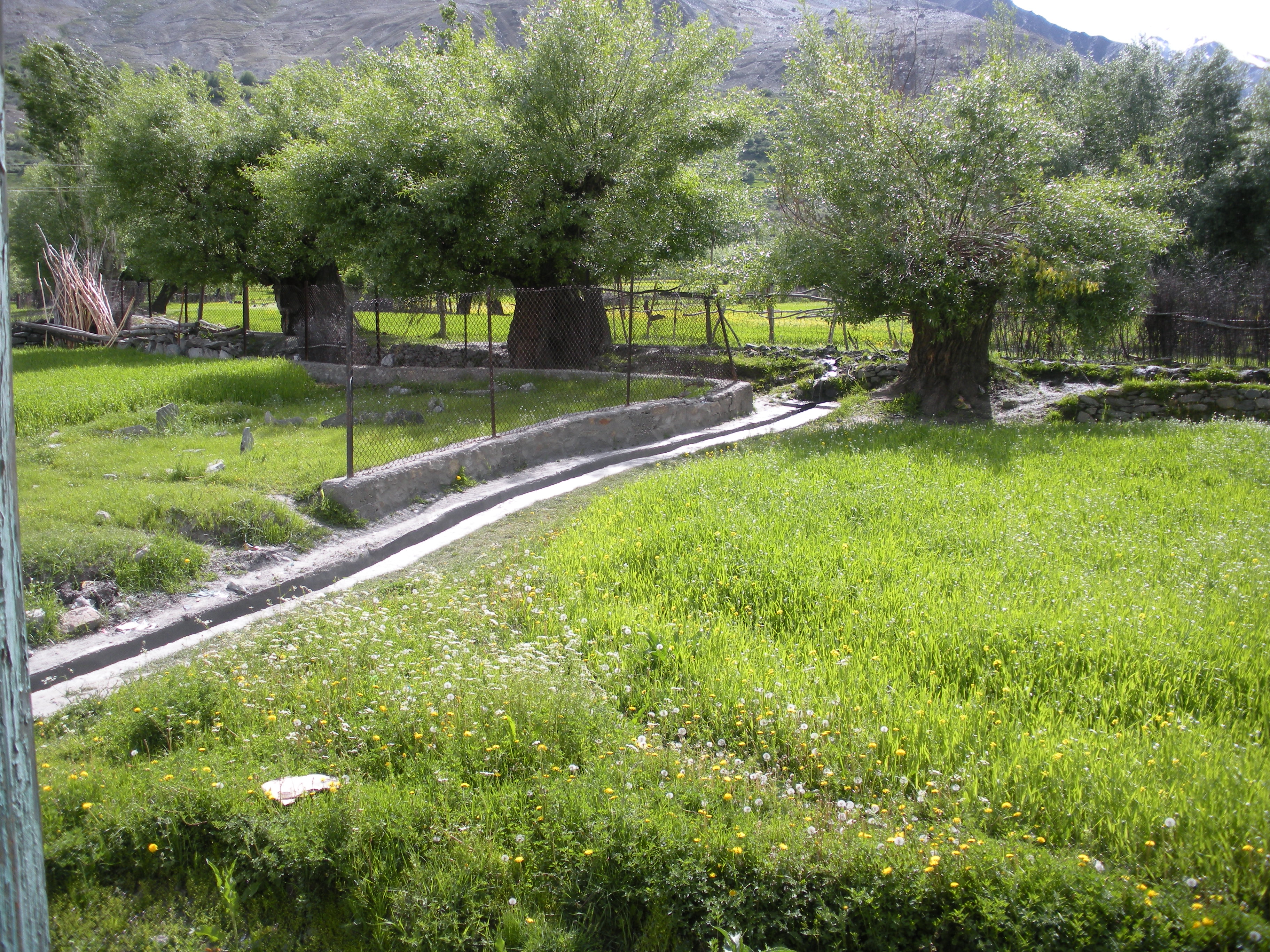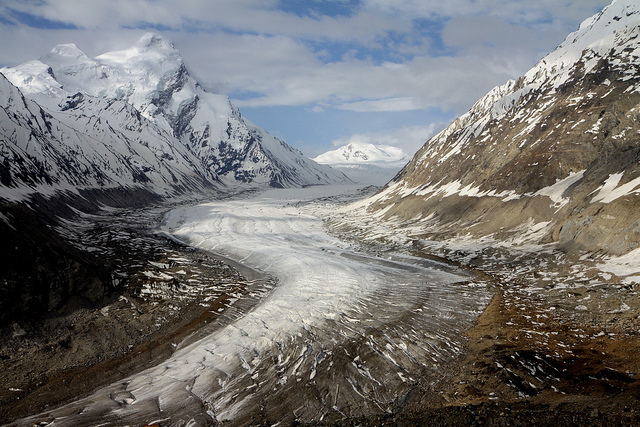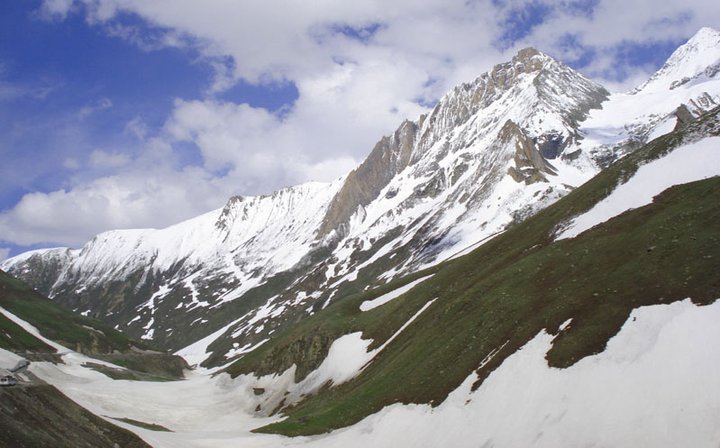India / Jammu & Kashmir/ Ladakh/ Ladakh
Sight Address : Sankoo is located at a distance of 42 km south of Kargil. Edit
Detail InformationEdit
Sankoo town is located 42 km south of Kargil in Jammu and Kashmir. It is primarily based in valley that is shaped like a bowl and many rivers like Nakpochu, Kartse and Suru drain into this valley, thus making it a very fertile and lush place. There are no major must see locations and destinations in the Sankoo valley, as the region is untouched and soulfully raw. Sankoo is the best place for anyone looking for a vacation spot that does not have bustling tourist activity, but still is second to none when it comes to natural beauty. The region has varied and extensive wildlife so while visiting Sankoo one can explore the nearby forest with a guide. The place is also popular among the local picnickers who reside in Kargil town and other places. A shrine dedicated to ancient saint Sayed Mir Hashim is located near the outskirts, and this is a place to visit.
HistoryEdit
Sankoo is a very popular among local picnic lovers who throng the area from Kargil town and other places. Locally it is also popular as a place of pilgrimage to the ancient shrines of Muslin scholar-saint, Sayed Mir Hashim, who was specially invited from Kashmir for imparting religious teachings to the region’s Buddhist ruler, Thi-Namgyal of the Suru principality, following his conversion to Islam during the 16th century. The shrine is situated in the village of Karpo-Khar on the outskirts of Sankoo where the chief had his summer palace. The Karste Valley runs deep into the eastern mountains mass with a large number of isolated villages tucked within its course. The 4-day trek between Sankoo and Mulbek follows this valley; the route passes through some very beautiful alpine areas on the way the 4950 m high Rusi-la. The high altitude settlement of Safi and its mixed Buddhist-Muslim population is struck between the Rusi-la and the Shafi-la over which the final leg of the trek passes before entering the Mulbek valley. A southward diversion from the foot of the Rusi-la leads to Rangdum across the glaciated Rangdum pass where the Karste River rises. The 3-day trek to Drass across the Umba-la (3350 m) follows the western valley.
Must SeeEdit
Attraction.
Visiting TimeEdit
N.A.
Closed OnEdit
N.A.
Best Season to VisitEdit
June to October.
Best Time To VisitEdit
Morning , Afternoon, Evening.
Time Required for SightseeingEdit
2-3 hours.
Ticket Required : No Edit
Individual National Adult Rs. : N.A.
Kids Rs. : N.A.
Individual Foreigner Adult Rs. : N.A.
Kids Rs. : N.A.
Still Photo Camera Rs. : N.A.
Video Camera Rs. : N.A.
Guide Required : No Edit
Approximate cost: N.A.
Dress Code (If Any) : N.A. Edit
Dress Require: No
Restaurants NearbyAdd / Edit
- Hotel Dragon ; city center , Leh 194101 sankoo ; Ph/M – N.A. ; Food Serve – N.A.
How to ReachEdit
Taxi : This place is well connected by road. Sankoo is 42 km south of Kargil.and is easily accessible by taxis from leh.
BUS : This place is well connected by leh .Himachal Tourism and State Transport Corporation along with J&K SRTC and several other travel companies run regular bus service to Leh. Sankoo is 42 km south of Kargil it takes 1 -2 hrs. from leh.
Train : Jammu Tawi Railway Station as it is the nearest railhead to Sankoo. This railway station is connected to cities like New Delhi, Bangalore, Trivandrum, and Chennai with the destination. Regular buses for Sankoo are available from Leh, Kargil, and from some regions in the Suru Valley.
Air : The nearest air base to the destination is Leh Airport and Srinagar Airport, which are well connected with Aurangabad, Jammu, Delhi, Bangalore, and Pune. Travellers can take buses or hire taxis for Sankoo from the airport.
Others : Truck : Trucks often stop for hitchhikers, who are usually expected to pay half the bus fare, bargaining may be necessary. They are slower than the buses and sometimes stop for long periods to unload cargo.
Things to CarryEdit
- Carry woolan cloths, Camera etc.
Safety / WarningEdit
- Ladakh is one of the safest parts of India, and the most basic precautions are enough to keep you and your possessions safe. Most of the region is dotted with military cantonments every 50-80 kms, but mainly because of its strategic position on international border between India and China. The army plays major part in rescue and aid efforts and that is why you will require to produce identification documents or written permission from local authorities before entering some remote places.
HelplineEdit
- Police Control Room : 100
- Fire Station : 101
- Ambulance : 102 /108




